Handmade Tiles Found in 101 Milwaukee Apartment Buildings
Uniquely beautiful creations across city a legacy of 6-year, pre-Depression trend.
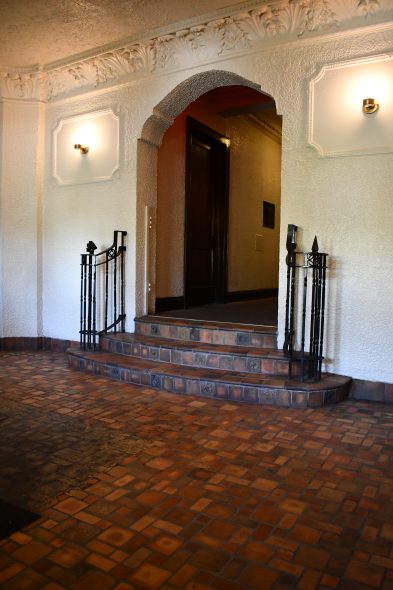
The historic Sheridan Apartments has a full lobby with Flandria and deco tiles. Photo by Ben Tyjeski.
If you have lived in a Milwaukee apartment building from the late 1920s, you are almost certain to be familiar with the Continental Faience & Tile Co.’s tile products: Flandria pavers or Valencia Mosaic. Although the product names are lost to history, these tiles are recognizable and made in Milwaukee.
Tile manufacturers during the late 1920s made what were generally called “fire-flashed pavers.” These were unglazed tiles in terra cotta, buff, and brown hues. Their warm-earth tones tiles were often contrasted with patterns of blue and green tiles, and occasionally patterned with sprinkles of colorful pictorial tiles.
When apartment buildings were constructed in the Milwaukee metro area from 1926 to 1932, these tiles were installed in seemingly all of them. And, remarkably, a significant portion of them are still found in situ.
Usually these tiles are found in lobbies or vestibules. These are high traffic spaces, and often show wear due to the many feet walking over them day after day, decades after decades. But despite all the renovations that happen to “modernize” these living spaces, many Milwaukee apartment buildings have preserved their tiles and maintained their historic charm.
Often what that means is just leaving them alone. No added tile sealers, maybe an occasional but laborious grout cleaning. The decorative tiles of birds, tall ships, and flowers are often obscured with dirt, but if those are given a gentle scrub with a toothbrush, their vibrant glaze colors are revealed.
These tiles are found in 1920s apartments all around the metro area and beyond, in Racine, Sheboygan, Manitowoc, Green Bay, and other cities in Wisconsin. Mediterranean and Spanish Revival styled apartments are usually decorated with these colorful but functional tiles, but they are also found commonly in Tudor Revivals, Art Deco apartments, and the like.
But there are tiles on East Side building from other manufacturers too! For example, there are Mueller Mosaic tiles in buildings at 2583 N. Murray and 2205 N. Farwell, Batchelder tiles in the Edgewater, and Flint Faience tiles in the Studio on Astor Street, among others. Tiles from other manufacturers are usually in apartments constructed before 1926, as the Continental Faience & Tile Co. began manufacturing these tiles in South Milwaukee in 1925. Their business changed the market and tile setters began using the locally-made tile.
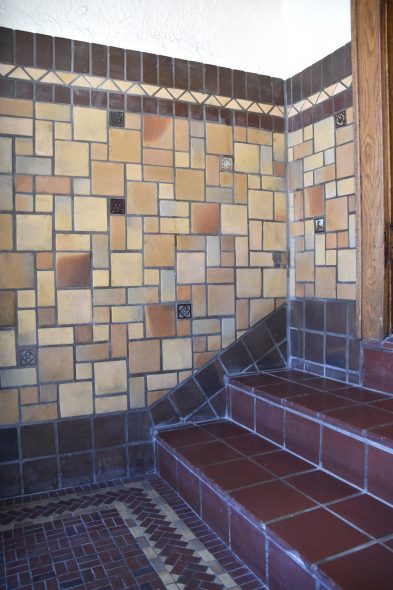
An exceptional installation of Flandria and deco tiles installed on the rare dado at the Julien Apartments on Vliet St. Photo by Ben Tyjeski.
Key distinctions can be observed in the texture of the clay bodies, their colors, and edges. Continental Faience unglazed tiles most often have bright terra cotta orange, buff, and silvery hues. Unlike also-popular Moravian tiles that show variation with smokey black shades on a single tile, Continental’s variations occur in the multiple hues of the clay, due to the mixing of clays in the preparation process, how the tiles were stacked, and the flashing during the kiln firings. The edges of the tiles are cleanly cut but not overly polished. The heavy presence of grog also makes their textured surface more sandy compared to their contemporaries like Mueller or Batchelder.
It is also worth noting that while the tiles were made in Milwaukee, the clays did not come from our lacustrine deposits along Lake Michigan, but from deposits in central Ohio near Zanesville. Carl Bergmans, the President and General Manager of the Continental Faience & Tile Co., originally worked in Zanesville when he moved to the United States from Europe. He learned to develop tile designs while working at factories in that city, and then developed more designs and glazes when he helped form the Flint Faience Tile Company in Michigan. Hence, when he began his own operations in South Milwaukee, he shipped clay in by rail to his new plant as those clay bodies were suitable for his tiles.
Fortunately building owners in Milwaukee have generally maintained the historic flooring in their apartments. Although they were common a century ago, that doesn’t mean they are not at risk of disappearing. Remodelers are hasty to renovate historic properties with modernized materials, the same ones you can find anywhere else in the country. These spaces are not unique; they’re standardized and unimportant.
The qualities of these tiles being handmade in Milwaukee gives an extra, special character to their placement in historic apartment buildings. Surely you can find similar tiles in other cities, but when people reside or visit this city, the character and artistry of these tiles offers something special and unique. This type of design is rarely found in new-builds constructed in Milwaukee in the last decade, perhaps with the exception of salvaged cream bricks. Overall, though, the new look of recently constructed buildings might make them look great now, but they also look like anything else found in the country, and their fresh and clean aesthetic will eventually look dull. There will be no reason to mourn them if they are some day replaced.
Photos
Learn more about Milwaukee-made tile in my recent book, Carl Bergmans and the Continental Faience & Tile Co., co-authored with Kelly Dudley and Kathy Roberts.
If you think stories like this are important, become a member of Urban Milwaukee and help support real, independent journalism. Plus you get some cool added benefits.
Tile Town
-
Ornamental Owls are Mentors in Milwaukee’s Schools
 Oct 6th, 2025 by Ben Tyjeski
Oct 6th, 2025 by Ben Tyjeski
-
Secret Garden Unveils Classic Batchelder Fountain
 Aug 28th, 2024 by Ben Tyjeski
Aug 28th, 2024 by Ben Tyjeski
-
Washington High School’s Tiled Bubblers Are Unique
 Apr 23rd, 2024 by Ben Tyjeski
Apr 23rd, 2024 by Ben Tyjeski


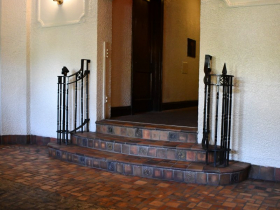
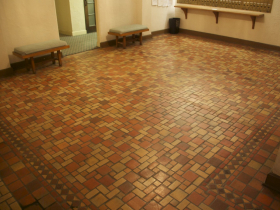
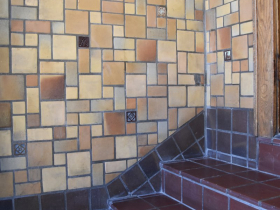


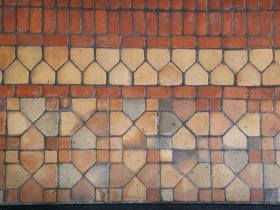
















Cool.
I just discovered what faience was reading Eric H. Cline’s 1177 B. C. The Year Civilization Collapsed (2021).
“… faience, a material halfway between pottery and glass, which (was) found at Mycenae, probably the leading city in fourteenth-century BC Greece.”